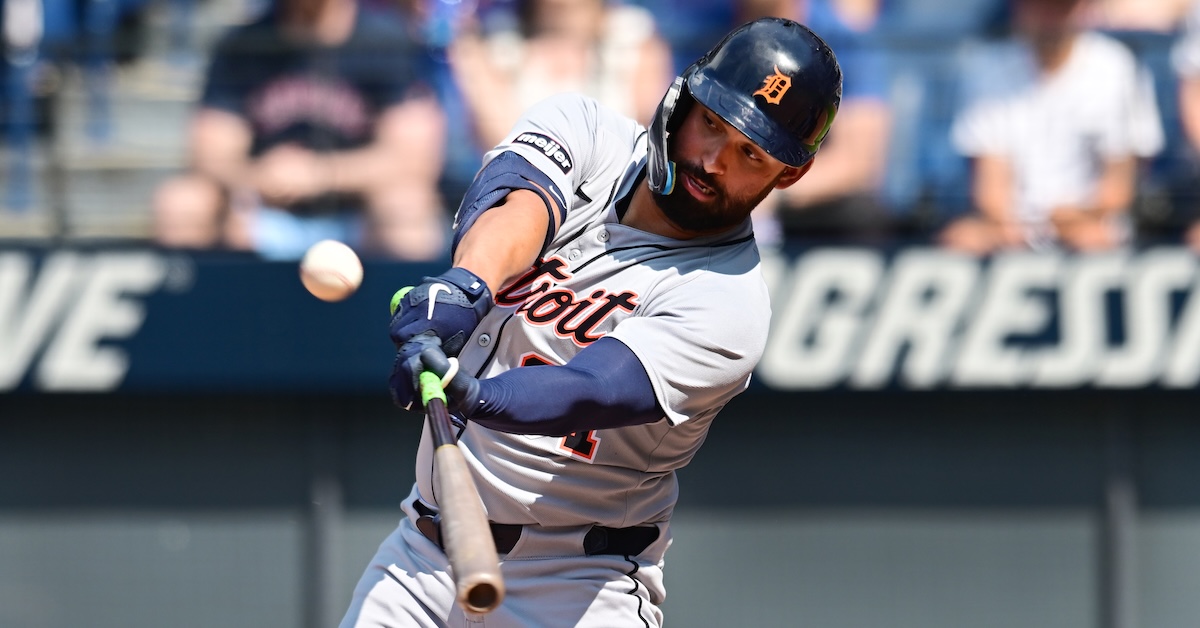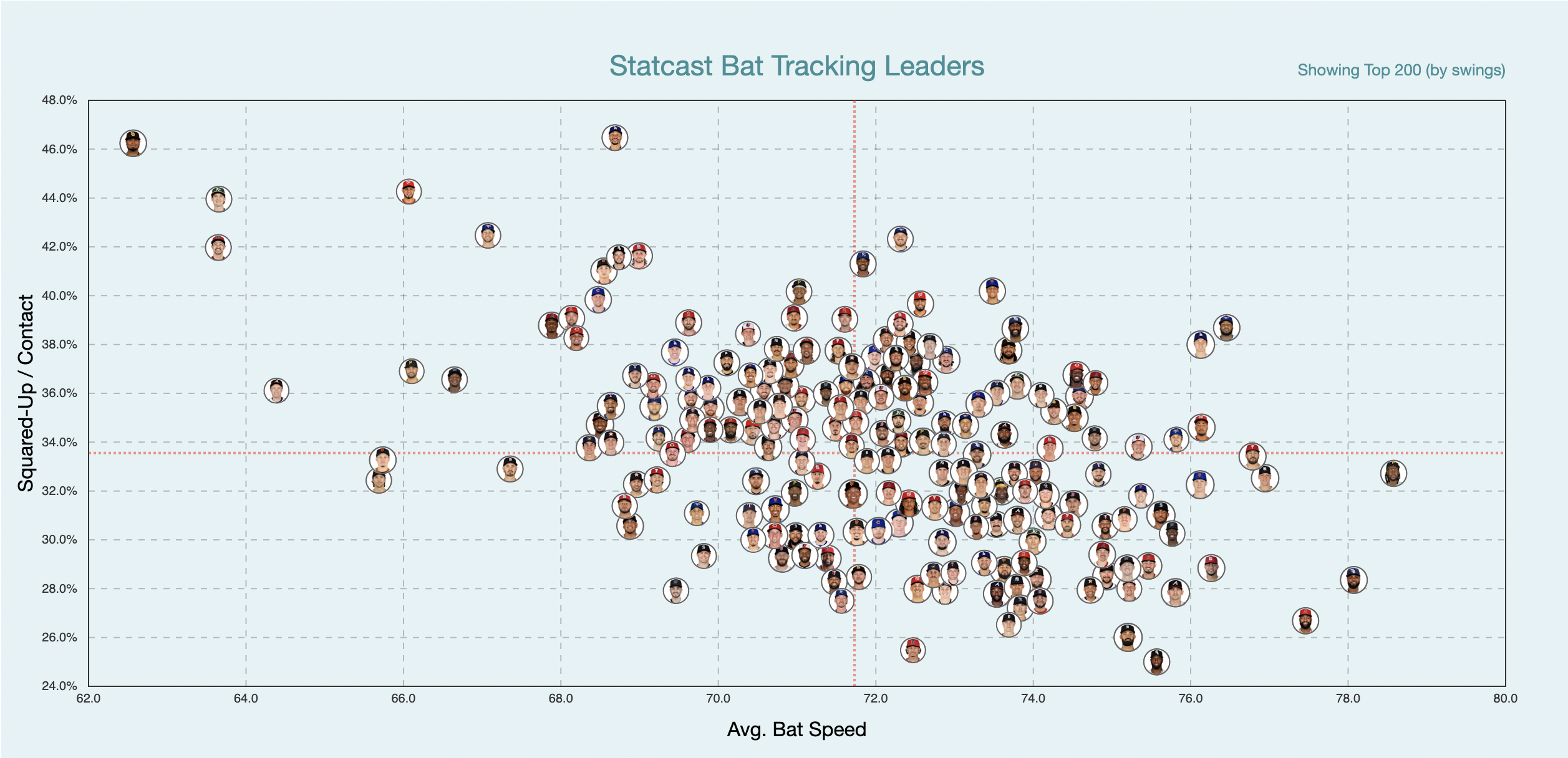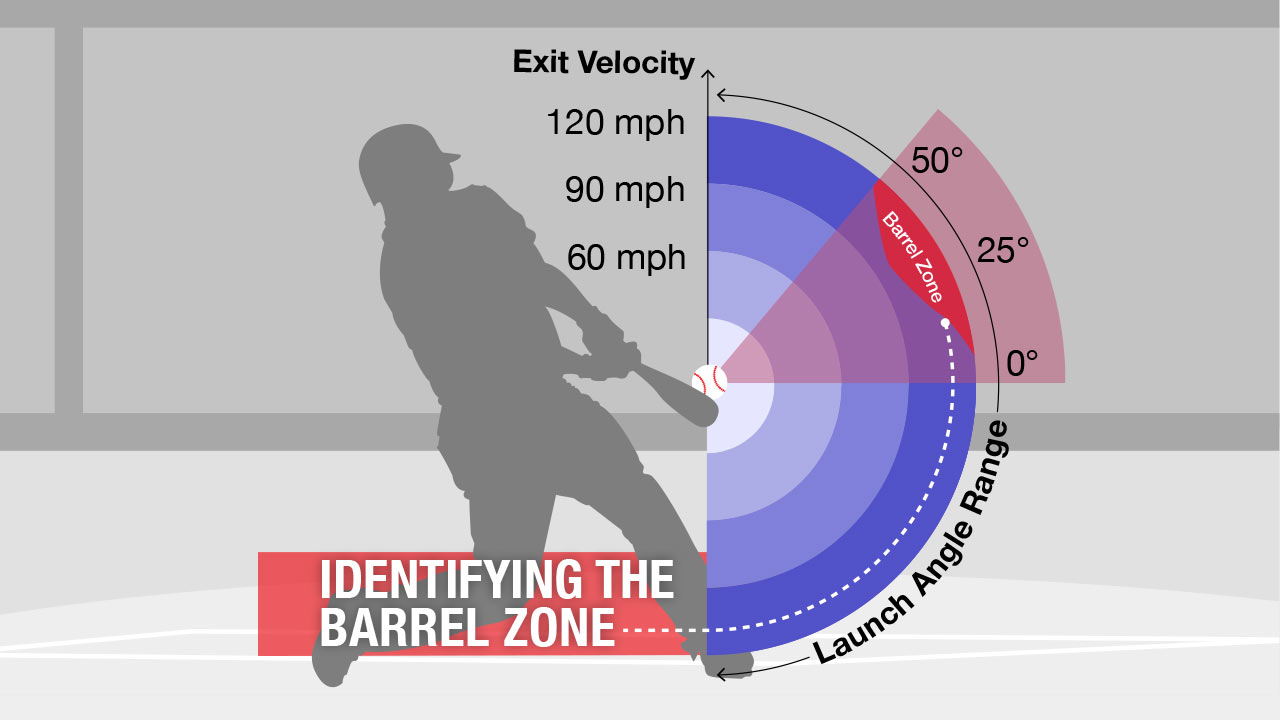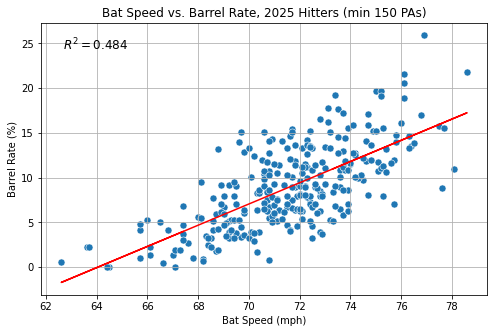Riley Greene Is Luis Arraez’s Wario

On last Monday’s episode of the Rates and Barrels podcast, Derek VanRiper raised a curious contradiction. “[Riley Greene is] first percentile in squared-up percentage, but 97th percentile in barrel rate, which — I’m sure there’s an explanation, I don’t know what it is just yet.” In response, Eno Sarris asked, “How can he barrel it without squaring it up?” It was a great question. In colloquial use, a squared-up ball is synonymous with a barreled ball. So what’s going on here, exactly?
The first thing to know: A squared-up ball is not necessarily a well-hit ball, as Davy Andrews highlighted when these stats were first made public last June. To understand why, one must first become acquainted with the Statcast definition of squared up. The MLB glossary entry for squared-up rate defines it thusly: “A swing’s squared-up rate tells us how much of the highest possible exit velocity available (based on the physics related to the swing speed and pitch speed) a batter was able to obtain – it is, at its simplest, how much exit velocity did you get as a share of how much exit velocity was possible based on your swing speed and the speed of the pitch.” If a hitter generates 80% of their possible exit velocity on a given swing and the ball is put in play, the batted ball is considered squared up.
We might quibble over the simplicity of that definition. In any case, as Davy showed, squared-up balls can be hit at super low speeds — if all it means is that a hitter channelled 80% of the potential exit velocity, then 80% of a half-swing is not very much exit velocity.
It’s also possible to do damage without making frequent flush contact; Greene shows us how. As Ben Clemens wrote just a couple of weeks ago, Greene is posting yet another excellent offensive campaign despite one of the higher strikeout rates among qualified hitters. He’s doing it unconventionally, swinging a ton in early counts to maximize damage. He’s also unconventional in another sense: He barrels the ball a ton while hardly ever squaring it up.
Part of the explanation for how this works is tied to the nature of swinging hard. When the bat speed statistics first dropped, it immediately became clear that there is a strong negative relationship between bat speed and the ability to square the ball up, at least by the Statcast definition. Click over to the bat tracking leaderboard, and the first thing you’ll see is this image, which shows the negative correlation between these two variables:

That’s no surprise. By the Statcast definition of a squared-up ball, slow swingers will always come out on top, because swinging slower allows for greater barrel accuracy. But it’s not all bad news for hard swingers. They also tend to produce the most valuable type of batted ball: a barrel.
Naturally, bat speed is correlated — positively — with barrel rate. A barrel, by the Statcast definition, is any type of batted ball where the expected batting average is at least .500 and the expected slugging percentage is at least 1.500. Barrels tend to be clustered in a pretty narrow exit velocity/launch angle range, somewhere north of 100 mph in terms of exit velocity and between 15 and 40 degrees or so of launch angle:

As the scatterplot below shows, the relationship between bat speed and barrel rate is extremely tight:

Greene’s average bat speed — 75.2 mph — is in the 91st percentile, so on some level, a high barrel rate and a low squared-up rate is to be expected. Even so, the spread between these two metrics is striking. His barrel rate is higher than his squared-up rate! Only one other hitter has a lower squared-up-minus-barrel rate — Aaron Judge. And that gives a hint into how, exactly, Greene is pulling this off.
Judge racks up an obscene number of barrels. Already, he’s mashed 60 this year, good for a 25.9% barrel rate. Like Greene, his squared-up rate is low — not as low, but comfortably a standard deviation below the mean. But also like Greene, Judge is amazing at converting his squared-up balls into barrels.
Nobody comes particularly close to Judge in this metric. Nearly 40% of his squared-up balls are converted into barrels, by far the highest rate in the league. (The league average is 13.6%.) As you might have guessed, Greene also excels here, ranking fifth among all hitters with at least 150 plate appearances:
| Name | % of Squared-Up Balls That Are Barrels |
|---|---|
| Aaron Judge | 39.7% |
| Oneil Cruz | 32.1% |
| Kyle Stowers | 31.9% |
| Shohei Ohtani | 30.7% |
| Riley Greene | 30.5% |
| Cal Raleigh | 29.1% |
| Seiya Suzuki | 29.1% |
| James Wood | 28.9% |
| Nick Kurtz | 28.8% |
| Pete Alonso | 28.7% |
So that’s the first part of this equation. Greene might not square the ball up that often, but when he does, it’s frequently crushed. The other part of the equation? Greene hits a ton of foul balls.
Greene’s 315 foul balls rank fifth among all hitters. When Greene makes contact with the ball, it goes foul 56% of the time. That mark ranks 11th out of all hitters with at least 150 plate appearances; besides Cal Raleigh, nobody else in Greene’s squared-up-to-barrel cohort fouls off nearly as many balls:
| Name | Fouls Per Contact |
|---|---|
| Bo Naylor | 59.0% |
| Anthony Santander | 58.2% |
| Sean Murphy | 57.6% |
| Kody Clemens | 57.2% |
| Cedric Mullins | 57.1% |
| Josh Lowe | 56.8% |
| Jasson Domínguez | 56.4% |
| Spencer Horwitz | 56.0% |
| Cal Raleigh | 56.0% |
| Jake Cronenworth | 55.8% |
| Riley Greene | 55.5% |
| Matt Thaiss | 55.4% |
| Tyler Stephenson | 55.4% |
| Brandon Marsh | 55.3% |
| Max Muncy | 55.3% |
All of those foul balls — in addition to his seventh percentile whiff rate — contribute to the squared-up percentage denominator, sinking Greene’s squared-up rate to the very bottom of qualified hitters. Importantly, foul balls are not part of the barrel rate denominator. The barrel rate that shows up on the Savant player page popsicles is a measure of barrels per batted ball event. A bunch of foul balls do nothing to affect a hitter’s barrel rate, but they’ll go a long way toward tanking a squared-up rate.
It isn’t necessarily intuitive to think that a hitter could be so good at barreling the ball and so bad at squaring it up. But breaking it down in this fashion, I think it starts to clarify this ostensible conundrum. Barrels are hard to come by. Even Judge, the barrel GOAT, hits one just over a quarter of the time he puts a ball in play. To be a barrel king like Judge or Greene, you don’t need to crush that many baseballs, at least on an absolute basis. But you better make sure that when the ball is in play, it gets smushed.
More than anything, I think these two data points paint a compelling picture of the modern hitter. Greene, perhaps more than any other hitter, goes for broke, almost like the anti-Luis Arraez. His swing tilt is the steepest in the sport. He mishits a bunch of pitches. He whiffs a ton. But when he connects, he does damage. And even though those damage events are relatively infrequent, they’re valuable enough to make him one of the better hitters in baseball.
Michael Rosen is a transportation researcher and the author of pitchplots.substack.com. He can be found on Twitter at @bymichaelrosen.

“Wario great!”